Art: Sculpture
Artists: Contemporary Anglo
In Britain, both feminism and feminist art took considerably longer to emerge and make their mark than in the United States, but when they did, many Jewish women artists created profound artistic work. British Jewish women artists generally hold both Jewishness and gender as central to their artistic output. Their art reveals the diverse ways in which women perceive their Jewishness in contemporary Britain.
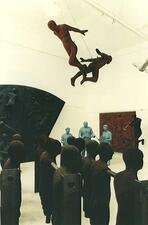
Artists: Israeli, 1970 to 2000
The inclusion of feminism in Israeli art was seen as irrelevant in the 1970s, when Israel was seen as a state of gender equality. But in the following decades, amid vast changes in Israeli society, women worked hard to make themselves seen and have their stories told in the wider world of Israeli art.
Artists: Russia and the Soviet Union
Jewish women participated in the artistic life of the Russian Empire and the Soviet Union for over a hundred years. Jewish women artists worked in all styles, from the routine academic to the extreme avant-garde. There were also well-known art patrons, gallery owners, art historians, and art critics.
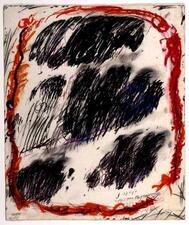
Artists: Yishuv and Israel: 1920-1970
While women are often excluded from the historical narrative of Israeli art-making, women artists made significant contributions to the canon of Israeli art throughout the twentieth century. Depicting landscapes, creating ceramics, and painting beautiful portraits, many female artists made significant contributions to the development of the Bezalel Art school and Israeli modern art. In 1952, the artistic Group of Ten was founded, to use a modern language in order to express the Israeli experience and landscape.
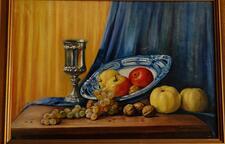
Austria: Jewish Women Artists
Most Jewish women artists from Austria have been forgotten due to the male domination of the Austrian art sphere and the Holocaust. However, many Jewish female artists in Austria created influential work and established their own system of education and their own organizations, leading to a flourishing female art world until 1938.

Judy Chicago
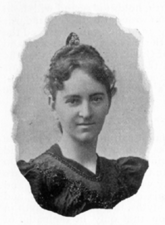
Katherine M. Cohen
Katherine M. Cohen was a sculptor and artist dedicated to advocating for equality for women in the arts. Comfortably situated in the community of Philadelphia’s Jewish elite, Cohen created many commissions for the community reflecting Jewish themes and illustrated a Jewish children’s book. Cohen made a speech at the Chicago World’s Fair advocating for the support of artists, and specifically female artists.

Audrey Flack
The only female member of the founding group of photorealists, New York-born painter and sculptor Audrey Flack is especially recognized for the feminine content in her art. Her feminist sensibilities manifest in both her pioneering paintings, which often consider stereotypes of womanhood, and her sculptures, frequently depicting goddesses and other strong female figures. Flack’s work appears in prominent collections around the world.
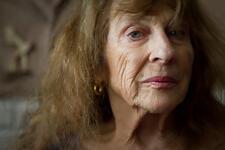
Mary Frank.
Mary Frank
Mary Frank was a sculptor and painter inspired by dance, photography, and the moving body. Born in London, Frank immigrated to the United States in the 1940s and danced with Martha Graham and studied art at the American Art School in New York. Frank imparts a sense of the timelessness and her work, and her sculptures have been described as sensual, sublime, poetic and profoundly moving, placing her among the foremost figurative artists of our time.
Temima Gezari
Artist and innovator Temima Gezari made a lasting impact on Jewish education through her vivid artwork, illustrations of children’s books, and many years of teaching. Her philosophy of using art to teach about Jewish holidays and customs left an indelible mark on countless schoolchildren. After more than 60years in the field, she was a legendary presence in Jewish education.
Gertrude/Gego Goldschmidt
Gego, born Gertrude Goldschmidt, was one of Venezuela’s most creative and ingenious artists. Her sculptures have not only a sense of closure but also a boundlessness erasing any distance between viewer and artist and insisting on generating new perspectives.
Eva Hesse
Eva Hesse created innovative sculptural forms using unconventional materials such as latex and fiberglass and gave minimal art organic, emotional, and kinetic features. She scorned the decorative, creating sculptures out of repeated units which embodied opposite extremes. Her large fiberglass and latex works are recognized as major works of the 1960s artistic era.
Janet Indick
Elena Kabischer-Jakerson
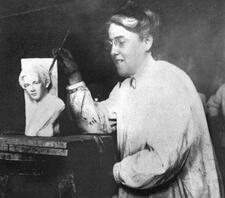
Rose Kohler
Rose Kohler was a multitalented woman who was known as an accomplished painter and sculptor. She was a teacher in, and later the chair of, the National Council of Jewish Women’s religious schools in Cincinnati, Ohio, and wrote many articles on art and religion.
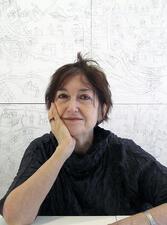
Joyce Kozloff
Joyce Kozloff is an internationally recognized painter, public muralist, and feminist whose long-term passions have been history, culture, and the decorative and popular arts. One of the founders of the pattern and decoration movement, Kozloff is dedicated to creating her own work and giving the folk art of women of color a voice. Kozloff is known as one of America’s more original and engaging artists.

Gertrud Kraus

Mirta Kupferminc
Mirta Kupferminc (b.1955) is an internationally recognized contemporary Argentine Jewish artist. For the past four decades, she has explored memory, culture, history, and language, in a variety of art media.
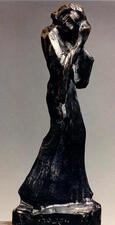
Batia Lichansky
Batia Lichansky, Israel’s first woman sculptor, famously expressed the pioneer Zionist spirit during the formative years of the State of Israel through her portrait sculptures, reliefs, and memorials sculpted in stone, wood, and bronze. After studying across Europe, Lichansky became a prominent Israeli artist and won the Tel Aviv-Jaffa Dizengoff Prize twice, in 1944 and 1957.
Charlotte Lipsky
Charlotte Schacht Lipsky found an unusual balance between activism and pragmatism: on one hand, a follower of the revolutionary Emma Goldman, on the other, the owner of a successful interior decorating business. In her later years, she was involved in Hadassah and the Women’s American ORT, an organization that taught trade skills to Jews around the world.
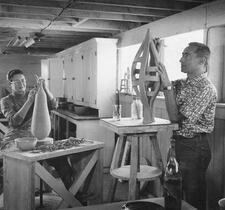
Gertrud Amon Natzler
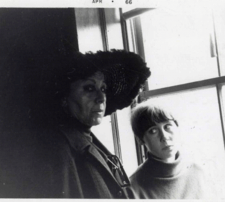
Louise Nevelson
Louise Nevelson belongs to a generation of Manhattan-based painters and sculptors whose careers coincided with the development of modernism in America. Nevelson created sculptures that audiences could both experience and see. Several of her pieces are now owned by the Whitney, the Brooklyn Museum, and MOMA.
Isadora Newman
Isadora Newman was a celebrated writer, storyteller, poet, and artist. Born in New Orleans, her stories often focused on Creole and Black life and legend and folktales from foreign countries. Her books were translated into many languages and she later became an accomplished painter and sculptor.
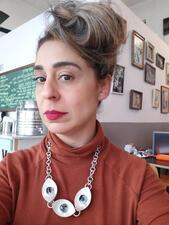
Vered Nissim
Multi-disciplinary artist, curator, and art consultant Vered Nissim was born in Israel to Iraqi immigrant parents. She identifies as a Mizrahi feminist; her art revolves around her gender, ethnic, and class identities, and she aims to give voice to marginalized women in Israeli society.
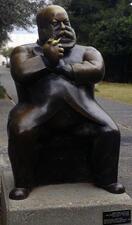
Chana Orloff
Sculptor Chana Orloff was a part of the avant-garde circle of Montparnasse, the international movement of artists in Paris. After immigrating to Paris from Palestine in 1910, Orloff became the unofficial portraitist of the Parisian elite, creating over three hundred portraits. Orloff’s sculpture figures are now in collections throughout Israel, Europe, and the United States.


